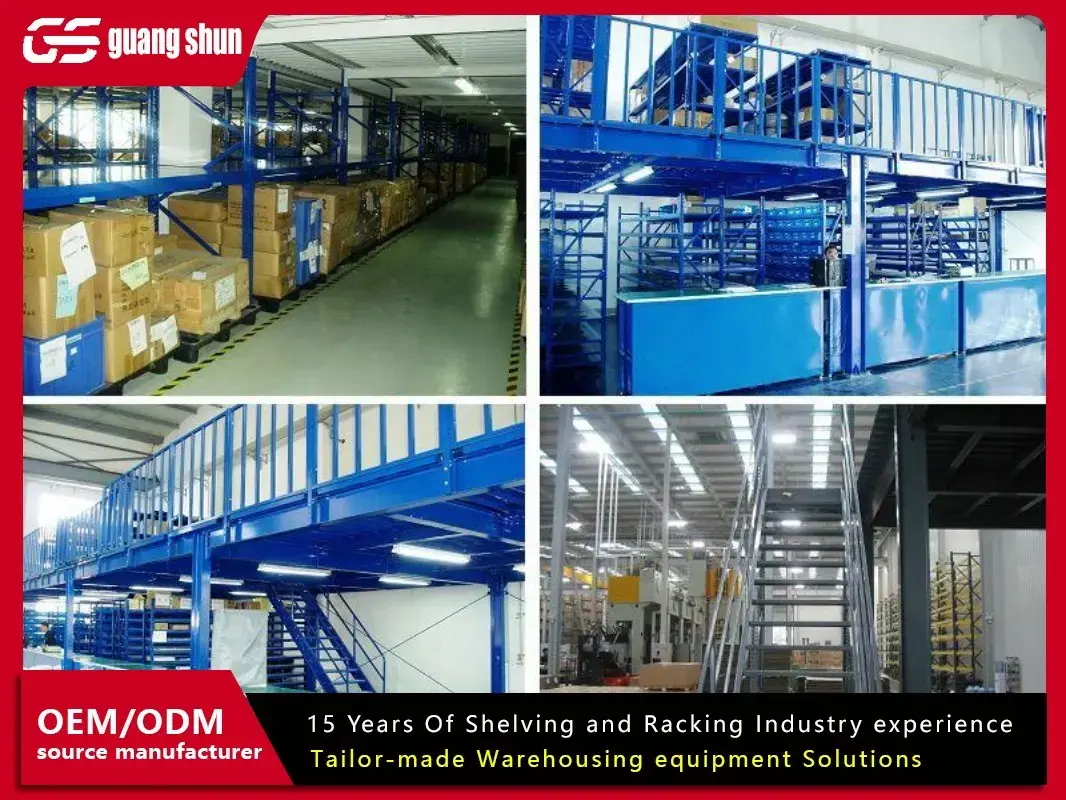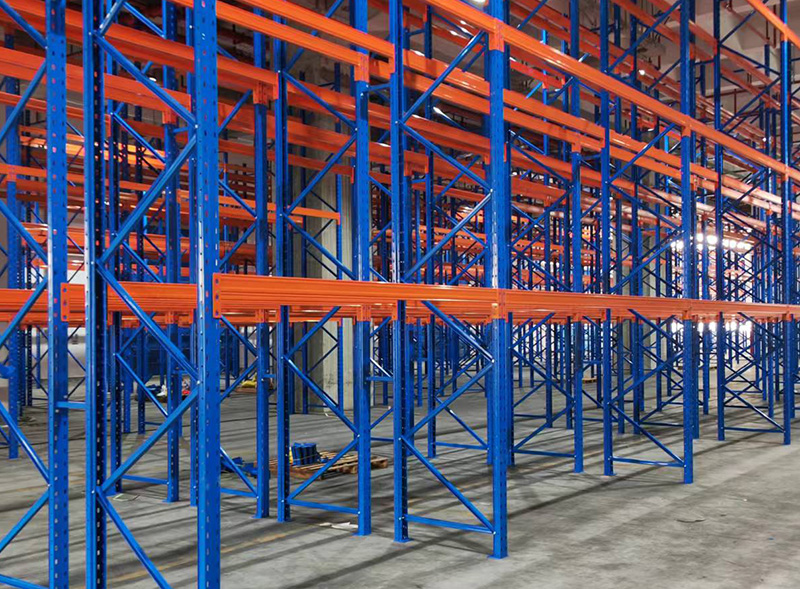Warehouse racking systems are the backbone of efficient storage and distribution, transforming vast spaces into organized, high-density storage solutions. At the heart of these systems, providing the critical horizontal support for palletized goods, are warehouse racking beams. Often overlooked, these components are fundamental to the safety, capacity, and overall functionality of your racking. Choosing the right warehouse racking beams is not merely an operational detail; it's a strategic decision impacting safety, storage density, and your bottom line. This comprehensive guide delves into five essential aspects of warehouse racking beams, empowering you to make informed decisions for your operation.

1. Understanding the Core Types & Classifications of Warehouse Racking Beams
Not all warehouse racking beams are created equal. They are meticulously engineered for specific racking systems and load requirements. Understanding the primary classifications is the first step:
Step Beams (Box Beams): The most common and versatile type. They feature a distinctive "step" or lip along the top of the lower horizontal member. This step is crucial for securely holding the wire decking or pallet supports that the actual pallets rest upon. Their robust box-like construction provides excellent strength and rigidity. Step beams are the standard choice for selective pallet racking systems.
Structural Beams: Engineered for heavy-duty applications and extremely high load capacities, often exceeding those of standard step beams. Instead of a rolled steel profile, they are constructed from heavy-gauge steel plates welded together, forming a deeper, more rigid "I-beam" or "C-channel" cross-section. These are essential for warehouse racking beams supporting very heavy pallet loads or in demanding environments like cold storage or seismic zones.
Roll Formed Beams: Manufactured by continuously bending a strip of steel through a series of rollers to create the desired cross-sectional profile (like step beams). This process is highly efficient and cost-effective for producing large quantities of standard beams. Most common step beams are roll-formed.
Welded Beams: Constructed by welding separate steel plates or components together. This method allows for greater customization in beam dimensions and capacities, often used for structural beams or special applications where roll-formed profiles aren't sufficient. They can offer higher precision and potentially higher capacities for specific dimensions.
System-Specific Beams: Certain racking types utilize unique beam designs:
Cantilever Racking Beams: Long, robust arms that protrude from a central column, designed for storing long, bulky items like lumber or pipes. They lack the step feature.
Drive-In/Drive-Through Racking Beams: Specially designed to be exceptionally strong and often have integrated guides or features to facilitate forklift movement within the lanes. They support pallets directly without decks along the rails.
Pallet Flow Beams: Incorporate integrated rails or tracks for the rollers or wheels of the pallet flow system, enabling gravity-fed movement of pallets.
2. Decoding Technical Specifications: Gauge, Height, Length & Capacity
Selecting the correct warehouse racking beams hinges on understanding their technical specifications. These specs directly dictate the beam's strength and suitability for your application:
Gauge (Thickness): This refers to the thickness of the steel used, typically measured in gauge (e.g., 12 gauge, 14 gauge) or millimeters (mm). Lower gauge numbers indicate thicker, stronger steel. For example, 12-gauge steel (~2.7mm) is significantly stronger than 16-gauge steel (~1.5mm). Choosing the appropriate gauge is paramount for achieving the required load capacity. Thicker gauges are mandatory for heavier loads.
Beam Height: This is the vertical dimension of the beam's cross-section, measured from the top to the bottom of the beam profile. Common heights range from 3 inches (76mm) up to 8 inches (203mm) or more for structural beams. Taller beams generally offer higher load capacities and greater resistance to bending (deflection) under load because they have more material distributed farther from the neutral axis. They are crucial for longer spans or heavier pallets.
Beam Length: The overall horizontal length of the beam, determining the front-to-back depth of the racking bay where pallets are stored. Standard lengths often range from 36 inches (914mm) to 120 inches (3048mm) or more, designed to accommodate standard pallet sizes (e.g., 48" deep pallets typically need beams at least 42" long for safe overhang). Correct length ensures pallets are properly supported.
Load Capacity (Uniformly Distributed Load - UDL): This is the most critical specification. It denotes the maximum safe weight the warehouse racking beam can support when the load is evenly distributed across its entire length. Capacities are expressed in pounds or kilograms per pair of beams (since beams are always used in pairs at each level). Capacity is determined by the beam's profile (type), gauge, height, length, and the spacing of the upright frames. Crucially, capacity decreases as beam length increases for a given profile and gauge. Always refer to the manufacturer's load tables specific to the beam type, gauge, height, length, and frame spacing. Never exceed the rated UDL.
Deflection Rating: This specifies the maximum allowable vertical bend or sag a beam can exhibit under its maximum rated load (e.g., L/180 or L/200, meaning deflection shouldn't exceed the beam length divided by 180 or 200). Proper deflection control ensures pallets sit level, decks function correctly, and the system remains stable.

3. Safety Features & Critical Design Elements
Warehouse racking beams incorporate specific design elements focused solely on safety and preventing catastrophic failures:
Safety Locks (Beam Locks / Clips): These are arguably the most vital safety feature. They are mechanical devices (clips, pins, bolts) that securely lock the warehouse racking beam into the connector or hook on the upright frame. Their purpose is to prevent the beam from accidentally becoming dislodged, especially during forklift impacts. Safety locks are mandatory and must be correctly installed on every beam end. Different types exist (teardrop clips, bolt-on locks, snap-in pins), but all must be compatible with the racking system.
Footplates / Endplates: Reinforced plates welded to the ends of the beam. They distribute the load transferred from the beam to the connector/hook on the upright frame more evenly, reducing stress concentrations. They also provide a larger surface area for the safety lock to engage with.
Reinforcements: Higher capacity warehouse racking beams, especially structural beams, often feature additional reinforcements. This can include:
Stiffeners: Vertical plates welded inside the beam profile at intervals along its length or near the ends to resist buckling and increase rigidity.
Doublers: Additional plates welded to the top or bottom flanges in high-stress areas (like near the connectors) to add localized strength.
Impact Protection: While not a beam feature itself, protecting beams from forklift impacts is critical. Column guards, rack protectors (upright and end-of-aisle), and aisle-width management are essential to prevent damage that compromises beam integrity.
Compliance Marking: Reputable manufacturers permanently mark each warehouse racking beam with essential information: manufacturer ID, beam type/part number, serial number (traceability), gauge, height, length, and crucially, the rated capacity per pair for a specified frame spacing. This marking is vital for inspection and verification.
4. Installation, Inspection & Maintenance: Ensuring Longevity and Safety
Proper handling and ongoing care are non-negotiable for warehouse racking beams:
Professional Installation: Racking systems, including beams, must be installed according to the manufacturer's specifications and drawings by qualified personnel. Key beam-related installation points include:
Ensuring beams are perfectly level.
Using the exact safety locks specified for the beam and upright connector combination.
Verifying that safety locks are fully and correctly engaged. A visual and physical check is essential.
Confirming beam lengths and capacities match the load application and rack configuration.
Regular Inspections: Systematic inspections are the frontline defense against racking failure. Inspections should focus on warehouse racking beams for:
Damage: Dents, bends, twists, cracks (especially near welds or end plates), severe corrosion. Any damaged beam must be immediately unloaded and reported. Replacement is almost always required – repairs are generally not permitted.
Safety Locks: Are they present? Are they the correct type? Are they fully engaged and undamaged? Missing or disengaged locks are a major hazard.
Deflection: Is the beam sagging excessively under load? Compare to original condition or use a straight edge. Excessive deflection indicates potential overload or damage.
Connections: Check for cracks or deformation in the beam end plates or the upright connector where the beam sits.
Straightness: Look for any bowing or twisting along the beam's length.
Scheduled Inspections: Follow a formal schedule:
Operator Visuals: Daily checks by forklift operators for obvious damage or dislodged beams.
Internal Formal: Regular documented inspections (e.g., weekly/monthly) by designated, trained warehouse personnel.
External Expert: Annual (or more frequent in high-risk/high-throughput environments) inspections by a qualified racking inspector (SEMA Approved in the UK, or equivalent elsewhere).
Maintenance & Replacement: Maintenance primarily involves keeping beams clean and promptly addressing damage. Replacement is the only acceptable solution for damaged warehouse racking beams. Always replace beams with the exact manufacturer-specified type, gauge, height, length, and capacity. Mixing incompatible beams or using non-OEM parts is extremely dangerous. Maintain accurate records of inspections and replacements.
5. Selecting the Right Warehouse Racking Beams: A Strategic Decision
Choosing beams isn't just about immediate needs; it's about optimizing your operation:
Pallet Load Characteristics: This is paramount.
Weight: Determine the heaviest pallet that will be stored on each beam level, not the average. Include the weight of any pallet supports or decks. This defines the minimum required UDL capacity per beam pair.
Dimensions: Pallet length, width, and depth dictate required beam length (for adequate overhang support) and influence how the load is distributed. Consider irregularly shaped loads.
Load Type: Are pallets uniformly loaded, or is weight concentrated (e.g., a heavy item in the center)? Beam capacities are rated for UDL; concentrated loads require derating – consult manufacturer tables.
Racking System Type & Configuration:
System: Selective pallet racking primarily uses step beams. Drive-in, push-back, or pallet flow require their specific beam types. Cantilever uses its unique arms.
Frame Spacing (Bay Width): The distance between upright frames. Beam capacity decreases as frame spacing increases for the same beam profile. Manufacturer load tables list capacities for specific spacings.
Number of Beam Levels: Higher levels often require higher capacity beams due to cumulative potential loads below and dynamic forces during loading/unloading.
Required Beam Length: Based on pallet depth and necessary overhang (typically 3-6 inches minimum per end for standard pallets). Longer beams inherently have lower capacities than shorter beams of the same profile and gauge.
Deflection Requirements: For smooth operation of pallet flow systems or sensitive goods, stricter deflection limits (e.g., L/250) might be needed, often requiring taller or heavier-gauge warehouse racking beams.
Environmental Factors:
Corrosion: Environments like cold storage, chemical storage, or coastal areas require beams with appropriate corrosion protection. This could mean thicker galvanized coatings (e.g., G300), stainless steel components, or specialized paint systems. Regularly inspect for corrosion.
Seismic Activity: High seismic zones mandate racking designed to specific codes, often requiring structural beams, increased bracing, and specific connection details.
Future-Proofing: Consider potential increases in pallet weights or changes in product mix. Selecting slightly higher capacity beams initially can provide flexibility and avoid costly system re-engineering later. However, never underspecify.
Consulting Load Tables & Experts: Never guess. Always use the official load capacity tables provided by the warehouse racking beams manufacturer for the specific beam type, gauge, height, length, and frame spacing. When in doubt, consult with a qualified racking engineer or supplier. SEMA (Storage Equipment Manufacturers' Association) guidelines are a key reference.
Warehouse racking beams are far more than simple metal bars. They are precision-engineered components fundamental to the structural integrity, safety, and operational efficiency of your entire storage system. Understanding the different types, meticulously analyzing the technical specifications (gauge, height, length, capacity), prioritizing safety features like locks and end plates, implementing rigorous inspection and maintenance protocols, and carefully selecting beams based on actual and anticipated load requirements are all critical responsibilities. Neglecting any aspect of warehouse racking beams jeopardizes employee safety, risks inventory loss, and can lead to costly operational downtime or regulatory penalties. By investing in the right beams and committing to their proper care, you build a solid foundation for a safe, productive, and resilient warehouse operation. Treat your warehouse racking beams with the respect and attention they demand – they are truly holding up your business.







